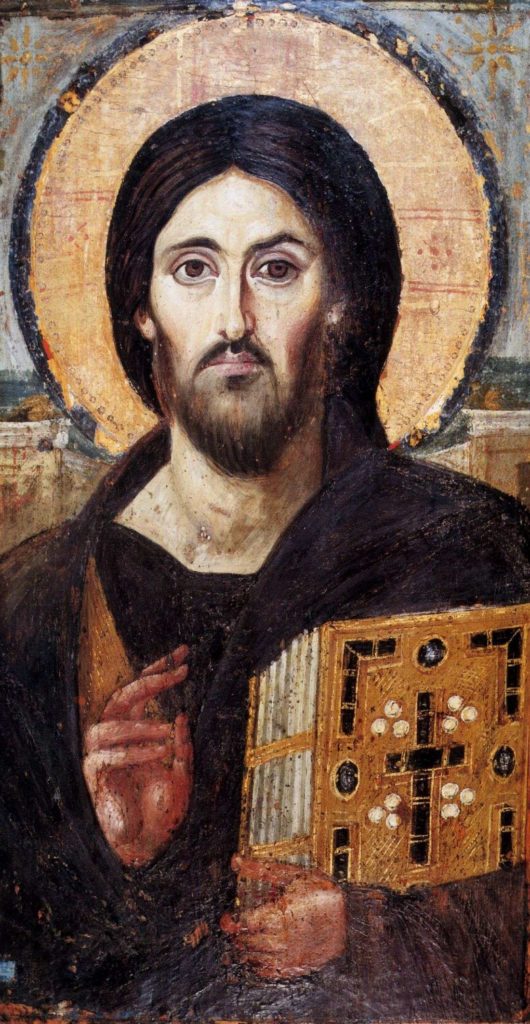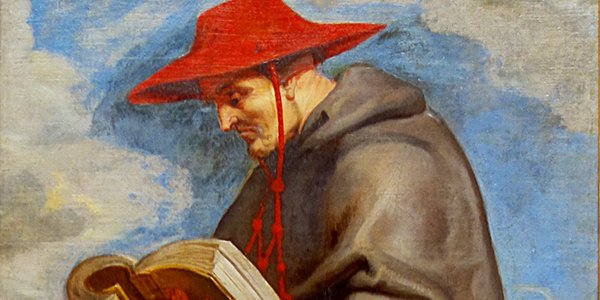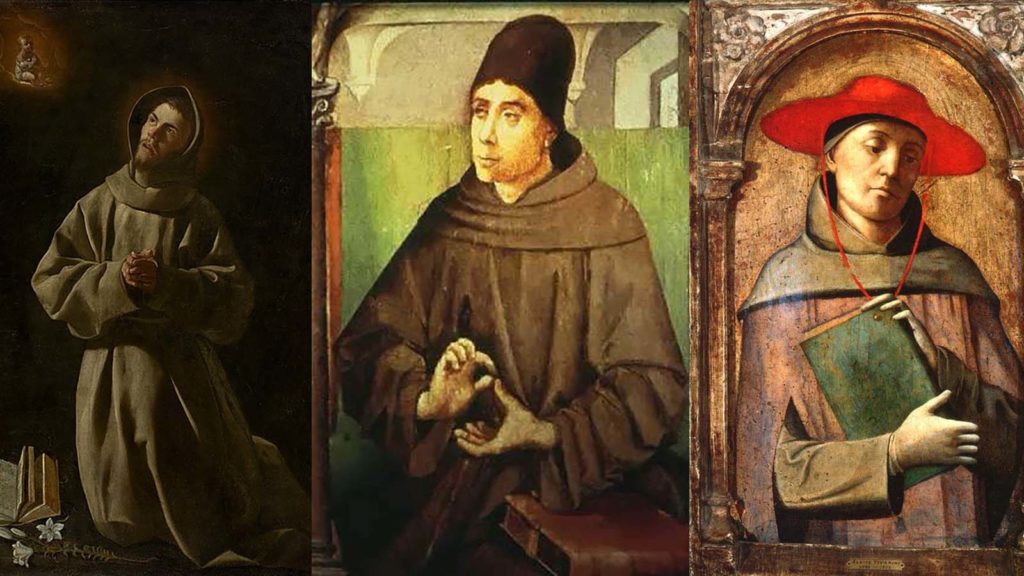Christ at the Center
July 15 is the Feast of Saint Bonaventure, one of the great Franciscans. With Saint Anthony of Padua and Blessed John Duns Scotus, Bonaventure is one of the most important and influential Franciscan theologians. His writings are well known and studied even to this day. He is also the patron of one of our provinces in the United States. Many Catholics know him as a cardinal of the Church, and may even be familiar with one of the various prayers he wrote.
While all of these aspects of Saint Bonaventure are immeasurable, there is something that must be understood to comprehend why this man gave his whole life to Christ and the Gospel. Without this foundational viewpoint of Saint Bonaventure, one can overlook the motivation for his life, thought, prayers, philosophy, and theology. This is his Christocentric view.
Saint Bonaventure was a true spiritual son of Saint Francis. Bonaventure even writes in The Major Legend that he had a near-death experience from which he was saved through the intercession of Saint Francis:
“For when I was a boy, as I still vividly remember, I was snatched from the jaws of death by his invocation and merits.”
After much discernment at the University of Paris, Saint Bonaventure entered the Order of Friars Minor. Through his education and prayer life with the friars, Saint Bonaventure came to understand something very essential about the world and creation: Christ is at the center of it all.
Yet, what can this thirteenth century Franciscan teach us about God? How can his life and experience, which was so different from our own, be of any help?

Well, Saint Bonaventure, along with all great Franciscans, grasped and understood that in the Incarnation of Jesus Christ (the Son of God coming down from Heaven to take on our human nature) is found the answer to all humanity’s questions and desires. Every mystery and question that we have as a human species is given an answer in Jesus Christ.
Yet, why is this the case? Jesus lived two thousand years ago; what can his life mean for every person who ever existed? Well, the answer comes from who Jesus is for Saint Bonaventure. Jesus Christ himself, the Incarnate God, is the pontifex (the bridge) between God and humanity.
Since Jesus is both fully God and fully human, in all things but sin, Jesus is the answer to all of humanity’s need and desire for God. This means that Jesus became the model for every human person, not just those who believe in God. The fullness of the Incarnation, God taking upon himself our human existence, is the answer to every conflict and division. As Saint Bonaventure wrote,
“In all your deeds and words, you should look upon this Jesus, as your model. Do so, whether you are walking or keeping silence, or speaking, whether you are alone or with others. He is perfect and thus, you will be, not only irreprehensible but praiseworthy.”
This is what is known as Saint Bonaventure’s Christocentric view: Jesus is the model and complete expression of humanity. With this view, if we are to understand who we are as humans, we must experience the revelation of Jesus’ Incarnation. This Christocentric view was even confirmed by the Second Vatican Council. The document Gaudium et Spes, states that “the truth is that only in the mystery of the incarnate Word does the mystery of man take on light…Christ, the final Adam, by the revelation of the mystery of the Father and His love, fully reveals man to man himself and makes his supreme calling clear.”
As we can see, Jesus’ Incarnation reveals to us humans our very selves and makes clear our true desire: the calling to be in loving union with God.

This image of Christ was created in the 6th or 7th century. The different expressions on the right and left side of the face may reflect His nature as both human and divine.
This emphasis on the love and mercy of God is a natural consequence of Saint Bonaventure’s Christocentric view. The reason for creation, the reason for the Incarnation, the reason for the human life of Jesus, the reason for the suffering, death, and resurrection of Jesus, is the outcome of God’s deep and unbounded love for us humans.
In the legacy of Saint Francis of Assisi, the primary reason and goal of life is to love God with every fiber of one’s being; to love so much that one becomes transformed into the image of the Beloved. This is our supreme calling and vocation: to recognize God’s love for us and to be moved to love God in return.
Just like Saint Bonaventure, we humans must recognize our deep longings and desires. These are expressed through music, art, poetry, and many other human expressions. And all of these expressions have something in common: the desire to reach beyond itself to someone or something.
This inherent desire and yearning is in all humans, no matter our culture, race, age, era, etc. The wisdom of Saint Bonaventure is that all of these are satisfied in the union of God and humanity, the union of Jesus Christ himself.
If Jesus is known, recognized, and valued as the center of all human existence, then we will experience God’s love and mercy, which satisfies every part of our human lives. We will truly know the Beloved, the one who loves us so much that he wishes to be with us in every aspect of our experiences. This is what the Christocentric view of Saint Bonaventure can give to us and to all future cultures. As he beautifully wrote,
“Seek the answer in God’s grace, not doctrine; desire, not intellect; the groaning of prayer, not studious reading; the Spouse, not the master; God, not man; darkness, not clarity; not light, but the fire that inflames totally and carries one into God with intense fervor and burning love.”
friar Arturo Felix OFM Conv.




